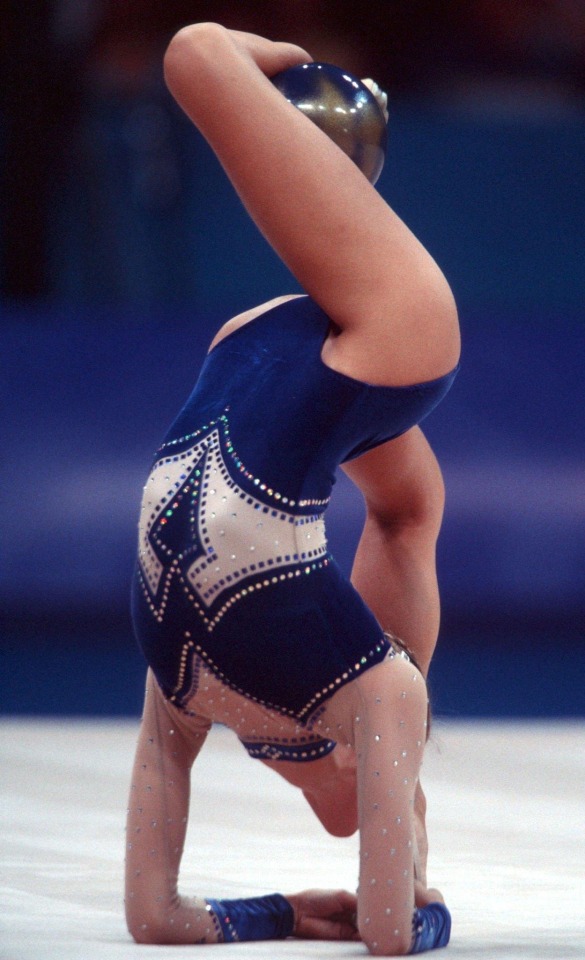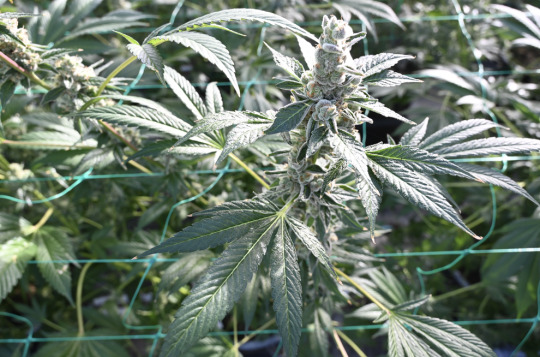#bongart
Explore tagged Tumblr posts
Text

Eiffel Tower Bong from wastedwaterpipes.com
1 note
·
View note
Text

Rhythmic gymnast Emilie Livingston, 2000. Photographed by Lutz Bongarts.
36 notes
·
View notes
Text
There's twice as many students in my botanical illustration class than in my painting class. What possessed people into thinking drawing plants realistically is more fun painting the impression of plants?
#i get it#people like looking at an apple and be like “yep that's an apple#and a good one too"#but when you see the violent paint strokes Sergie Bongart interpreting a flower bouquet you cannot go home again
0 notes
Text

Mark Webber is poked in the face by an errant team umbrella on the way to the grid May 9, 2010 - Barcelona, Spain Source: Vladimir Rys/Bongarts/Getty Images
513 notes
·
View notes
Text


sebastian vettel at a sponsor event at hangar-7 in salzburg, austria - november 27, 2007 📷 bongarts / getty
#sebastian vettel#f1#formula 1#flashback fic ref#flashback fic ref 2007#not a race#2007 not a race#post-season#post-season 2007
21 notes
·
View notes
Text

michael schumacher and alain prost on race day, monaco - may 23, 1993 📷 bongarts / getty
#michael schumacher#alain prost#f1#formula 1#monaco gp 1993#benetton#williams#monaco#1993#1990s#1993 monaco gp
67 notes
·
View notes
Text

1996 Australian Grand Prix. (L-R) Irvine, Schumacher, Häkkinen, Coulthard Photo by Alexander Hassenstein/Bongarts/Getty Images
#the picture is so blurry i hate it#but the red marlboro suits 😍#formula 1#f1#old f1#f1 archive#eddie irvine#michael schumacher#mika hakkinen#david coulthard#scuderia ferrari#mclaren-mercedes#msc-ferrari#f1-1996#1996 australian gp#australian grand prix
89 notes
·
View notes
Text
Rephael Ariel Guri | Reuven Heinik | Reuven Weisman | Revaya Mansouri | Ricardo David Lischov | Rinat Even | Rinat Hodaya Zagdon | Rivka Ben Horin | Robert Shaulov | Roi Idan | Roi Popplewell | Roie Monder | Roland Sultan | Romi Brandt Eliyahu | Ron Binyamin | Ron Shemer | Ron Weinberg | Ron Yehudai | Ronen Ditchman | Ronen Engel | Roni Petrovski | Roni Polvanov | Roni Shitrit | Ronit Hodaya Zagadon | Ronit Sultan | Ronnie Levi | Rosa Yedgarov | Rotem Neiman | Rotem Rahel Levi | Rudy Skrzewski | Ruth (Rutti) Akuni | Ruth Hodaya Peretz | Sagi Zak | Sagiv Beilin Ben Zvi | Sahar Ashuan | Sahar Baruch | Said (David) Moshe | Sakda Surakhai | Saksit Khotmee | Samer Fuad El-Talalka | Sami Keidar | Sammi Jarjawi | San Amnon Yakobov | Sapir Bilmas | Saryut Penkitwanitcharon | Sattawat Phiaaia | Savyon Chen Kipper | Savyon Chen Kipper | Rotem Kalderon | Sefi Yossef Gennis | Segev Israel Kishner | Segev Shushan | Semion Abdilemov | Seriyut Pankitwanitchirnm | Seta Homsorn | Shachaf Kreif | Shachar Gal Kadman | Shachar Siman Tov | Shahak Yossef Madar | Shahar Ben Naim | Shahar Gal | Shahar Gindi | Shahar Mansour | Shahr Mattias | Shai Regev | Shai Shalev | Shai Shalom Elior Mutzafi | Shaked Habani | Shalev Gal | Shalev Madmoni | Shalom Abudi | Shani Ben Ami | Shani Gabai | Shani Kupervaser | Shani Nicol Louk | Sharif Suad | Sharon Goradny | Sharon Hirsch Uzan | Sharon Refai | Sharona Shmunis Harel | Shaun Davitashvili | Shenhav Ya’akov Gerfi | Shifra Noy | Shimon (Shimi) Hayat | Shimon Hiat | Shir Hanna Georgie | Shir Yaron | Shira Ayalon | Shiran Ganon | Shiraz Brodash | Shiraz-Shiran Yashmireni | Shlomi Davidovitch | Shlomi Mattias | Shlomi Molko | Shlomo (Shlomi) Sividia | Shlomo Elfasi | Shlomo Eliyahu Elsheikh | Shmil Abasov | Shmuel Shmulik Weiss | Shoham Lia Turgeman | Shoham Ya’akov Gerfi | Shon Deutshvili | Shoshana Brosh | Shoshana Karasanti | Shraga Hassid | Shulamit Merenstein | Shuval Ya’akov | Sigal Itah | Sigal Levi | Simon Vigdergauz | Sindi Flash | Sivan Alkavetz | Sivan Sharhabani | Sofia Popov | Solomon Aliagoyev | Somchai Sayang | Somkhoun Pansa-Ard | Sonthaya Oakkharasri | Sophia Bongart | Srithat Kawao | Stav Barazani
These are the names of just a few of the victims of October 7, those murdered by the horde of Nazi savages from Gaza, or those kidnapped and imprisoned within that moral sewer.
On October 6, all of these people were alive and minding their own business. They were living their own lives. Islamic terrorists from Gaza took that all away from them, leaving a permanent scar on their communities and the entire nation of Israel.
More names will be coming up soon.
#israel#october 7#remember them#gaza#palestinian terrorists#evil#never forget#stand with israel#hamas is isis#bring them home now
8 notes
·
View notes
Text

@melpetersart invited me to @sapinchapong studio today to see his works. That was awe-inspiring. Sunny was a student of Sergei Bongart and he's got the touch of the old Russian Impressionism. I was impressed at the powerful impasto brush strokes and the dark bold colors. As soon as I got home I wanted to reproduce the same effects with acrylic and gouache. Combining gouache and acrylic, both of which waterbase has taught me some amazing discovery. They do mix and they do work together, but acrylic resists blending because it dries much faster and it will not dissolve again. Gouache dries slower and is more willing to blend with each other giving a softer hue mix. Acrylic would dry into a more uniform color and so much brighter with more contrast. Gouache would dry into a matte duller tone. I'm blown away by the differences. Gouache is a golden medium for me as I want so badly a replacement for oil. "Doraemon" (Gift of Yutaka San from his recent Japan trip) Acrylic & gouache on A5x2 Hahnemühle portrait watercolor sketchbook (coldpress) Sketched live in 2 hours Feb 14 2024
#油彩画#水彩画#sketch#croquis#cityscapepainting#sketchbook#stilllifepainting#gouachestilllife#citysketch#スケッチ#dessin#gouache#urbansketchers#gouachepainting#アート#イラスト#グラフィック#デザイン#travelsketch#만화#urbansketching
14 notes
·
View notes
Text

lewis hamilton during the drivers parade, united states - june 14, 2007 📷 bongarts / getty
#lewis hamilton#f1#formula 1#us gp 2007#flashback fic ref#flashback fic ref 2007#usa#usa 2007#usa 2007 thursday
3 notes
·
View notes
Text
تم اتهام Anju Posteco Glue من توتنهام بـ "ساذج بشكل لا يصدق".
صورة اصطناعية لـ Anju Posteco Glue و Kevin Keikan. توفير الصور: Michael Regan/Getty Images ، Mark Sandten/Bongarts/Getty Images يحب Stan Corimore لعبة Tottenham Hot Sparrow ، بقيادة Ange Posteco Glue ، مما يشير إلى أن اللاعبين الأستراليين الذين يحاولون إنجازهم في الدوري الإنجليزي الممتاز “غير معروفين بشكل لا يصدق”. يعتبر Lily Whites هذا الموسم مكتئبًا جدًا ، وحتى التفكير في الإصابات ، لم يكن…

View On WordPress
0 notes
Text


Pasha Grishuk and Evgeni Platov Free Dance, 1998. Photographed by Lutz Bongarts.
65 notes
·
View notes
Text

AUGSBURG, GERMANY - AUGUST 10: Robert Lewandowski (L) and Marco Reus of Dortmund celebrate the fourth goal during the Bundesliga match between FC Augsburg and Borussia Dortmund at SGL Arena on August 10, 2013 in Augsburg, Germany. (Photo by Lennart Preiss/Bongarts/Getty Images)
0 notes
Text


March 14, 2010 - Sakir, Bahrain Source: Vladimir Rys/Bongarts/Getty Images
#vlad does it again#f1#formula 1#sebastian vettel#mark webber#red bull racing#red bull seb#2010#sv5#martian#martian monday#sebmark
185 notes
·
View notes
Text
How To Retain Your Nail Length—And Strength—After Acrylic Removal
Bongarts/Getty Images Traditional acrylics are one of the most popular types of nail extensions. We’ve seen them on Flo-Jo, Lil’ Kim and, at an extreme, the beauty community of Newark’s Long Nail Goddesses. From their customizable shape and thickness, to their long-lasting durability, acrylics are a beauty standard in the nail world. That is, until they have to come off. “Acrylics always have…
0 notes
Text
Cannabis Doesn’t Enhance Performance. So Why Is It Banned In Elite Sports?
Here’s how cannabis use became prohibited—and the science of its biological, psychological, and social effects.
— By Kara Norton | Published: Tuesday November 9, 2021 | NOVA — PBS

The cannabis plant contains over 400 chemicals, including the cannabinoids tetrahydrocannabinol (THC), the primary psychoactive compound, and cannabidiol (CBD). Image Credit: NOVA/GBH
At the 1998 Winter Olympics in Nagano, Japan, snowboarding made its debut as an Olympic sport. No longer relegated to the fringes, snowboarders took to the snow-capped peaks of Mount Yakebitai, and 26-year-old Canadian Ross Rebagliati rose to global fame. But shortly after he won gold in the giant slalom event, a drug test revealed 17.8 nanograms per milliliter of THC, the psychoactive compound in cannabis, in Rebagliati’s system, which he still attributes to secondhand smoke.
“Cannabis back then was seen as being for losers and lazy stoners,” Rebagliati told The New York Times. “The big corporate sponsors didn’t want to sponsor me. I became a source of entertainment, a joke. I went from hero to zero overnight.”
Rebagliati was initially stripped of his medal, but because cannabis had not been officially banned by the International Olympic Committee (IOC), he was ultimately able to keep the gold. Two months after his failed drug test, the IOC officially banned cannabis due to its illicit status as a social drug.
The Politicization of Pot
As the war on drugs was waged on America’s streets, it was also playing out in sports arenas around the world. “We had to draw a lesson from Nagano,” IOC Director General Francois Carrard told the Associated Press in 1998. “The IOC wants to take a stand against a social drug."
Prince Alexandre de Merode, chairman of the IOC medical commission at the time, added that cannabis should be banned even though it does not act as a performance-enhancer like steroids.
Roger Pielke Jr., an expert in sports governance and a professor of environmental studies at the University of Colorado Boulder, claims that “the deeper reality was that the Clinton administration’s focus on anti-doping regulations helped serve its domestic policy agenda, which was focused on waging a war on drugs.”
In 1998, the United States pledged an unprecedented $1 million to assist the IOC in its mission to eradicate drugs from elite sports. Barry McCaffrey, director of the Office of National Drug Control Policy, was adamant that recreational drugs such as cannabis should be just as much of a priority for the international sports community as performance-enhancing drugs.
“We raise Olympic athletes up on international pedestals for all the world’s children to look up to as role models—it is vital that the message they send is drug-free,” McCaffrey wrote in a 10-page memo to the IOC. “The goal of this whole effort must be to prevent Olympic medals and the Olympic movement from being tarnished by drugs.”

Snowboarder Ross Rebagliati at the 1998 Winter Olympics in Nagano, Japan, where he won gold for Canada in the men's giant slalom. Image Credit: Mark Sandten, Bongarts, Getty Images
According to Pielke, Rebagliati’s case gave the U.S. government the leverage it needed to lobby U.S. anti-doping leaders to include marijuana on the World Anti-Doping Agency’s (WADA) Prohibited List.
WADA was established in 1999 through a collective initiative led by the IOC, and maintains the World Anti-Doping Code and prohibited list. Its key role is to standardize anti-doping regulations globally for Olympic sports. Director McCaffrey led the U.S. delegation at the first official meeting of WADA, after which “WADA looked far more like the institution the United States and its other international partners called for, than the original IOC-formed WADA” according to a report from the White House Office of National Drug Control Policy (ONDCP) on the agency’s actions and accomplishments from 1993-2000. The United States is also the largest individual contributor to WADA, which receives half of its funding from the IOC, and half from governments around the world. In 2020, the U.S. pledged over $2.7 million of the $37.4 million WADA budget.
Despite the U.S. government’s stance on social drugs, the ONDCP acknowledged that the athletic community itself was less concerned about cannabis than about performance-enhancing substances, like anabolic steroids, which can promote tissue growth and muscle generation and shorten recovery time after a workout.
“In the course of our efforts to put in place an IOC ban on marijuana, athletes and sports officials at all levels—ranging from Olympians to high school coaches to youth athletes—informed ONDCP that they felt that the more urgent drug threat within the sports world was the use of performance enhancing drugs,” the ONDCP report stated. These concerns, the report notes, were “scientifically grounded” by the results of the 1999 Monitoring the Future survey, which concluded that youth steroid use increased roughly 50% over the prior year’s study.
Why Is Cannabis Banned?
According to WADA, any substance may be included on its prohibited list if it meets two of three criteria: it has the potential to be performance enhancing, it poses a potential or actual health risk to the athlete, or it violates the “spirit of the sport.”
WADA did not respond to questions from NOVA about the prohibited list or cannabis’s status on the list. But several recent studies investigate whether cannabis has performance-enhancing qualities in athletic competition. A 2020 literature review by researchers not associated with WADA concluded, “there appears to be no reason based on current data to believe that cannabis has any significant ergogenic [performance-enhancing] effect.” An independent 2021 review echoed that conclusion, saying cannabis “does not act as a sport performance enhancing agent as raised by popular beliefs.”
“In no circumstances is (cannabis) ever a performance enhancing substance. It is a net negative in terms of athletic ability and performance,” says Jeff Anderson, a professor of radiology and imaging sciences at the University of Utah who studies how the brain responds to compounds found in cannabis. “On the whole, people under the influence of THC are not able to perform as well on cognitive tests, they have slowed reaction times, decreased executive function, decreased attention.”
Two decades after WADA banned cannabis, U.S. track and field sprinter Sha’Carri Richardson delivered a show-stopping performance at the Olympic trials, followed by an emotional interview in which she said she learned the week before that her birth mother had died. However, Richardson’s dreams of competing at the (delayed) 2020 Summer Olympics in Tokyo were dashed when she tested positive for THC, renewing a discussion about cannabis’s impact on performance.
Since cannabis was banned, the public perception and legal landscape surrounding its use have changed greatly. While cannabis is illegal at a federal level, medical cannabis is legal in 37 states, and cannabidiol (CBD)—reportedly used by 1 in 7 Americans—is no longer prohibited by WADA. In the court of public opinion, where Rebagliati once found infamy, Richardson found support, and her case left many questioning the science behind cannabis’s prohibited status.
“Drug testing is yet another tool of the drug war, and it’s a failure,” Kassandra Frederique, executive director of the Drug Policy Alliance, said in a statement. “Sha’Carri’s suspension serves as a cautionary tale and a reminder of how insidious the drug war is in our everyday lives, far beyond the carceral state.”

Sha'Carri Richardson looks on after winning the women's 100 meter final at the U.S. Olympic Track & Field Team Trials on June 19, 2021 in Eugene, Oregon. Image Credit: Patrick Smith, Getty Images
Cannabis In The Body
Under the guidelines outlined by WADA, “all natural and synthetic cannabinoids that mimic the effects of THC are prohibited, however CBD is not prohibited.”
A cannabinoid is a compound that—no matter the source—interacts with cannabinoid receptors, which are found in nearly every organ in the human body. THC, for example, affects cannabis users by binding to cannabinoid receptors in and outside the brain, causing cells to behave differently. (The receptors also bind with the body’s natural cannabis-like chemicals, called endocannabinoids.)
Since the 1998 Winter Olympics, the THC metabolite limit for Olympic athletes has been raised from 15 nanograms per milliliter to 180, purportedly to only detect in-competition use of cannabis. However, the length of time cannabis will stay in a person’s system depends on frequency of use and the amount consumed.
This has to do with the way cannabis is metabolized. When smoked, ingested, or otherwise consumed, cannabinoids are absorbed and retained in many parts of the body, particularly fatty tissue. Eventually, the THC byproducts are released and excreted through urine. However, daily consumers of cannabis accumulate THC faster than it can be removed from the body, reports Lia Tabackman for Insider Health.
“Urine testing is one of the most common drug testing methods,” notes Tabackman. It is also widely used in elite sports.
According to a 2008 report on drug screening in the journal Mayo Clinic Proceedings, cannabis can be detected in urine for up to three days after a single use. For moderate users (4 times per week), cannabis can still be detected 5 to 7 days after last use. And in heavy daily smokers, it can be detected in urine for up to 30 days or more after they stop.
But when it comes to quantifying behavioral impairment while using cannabis, a National Institute of Justice study led by researchers from RTI International found that measuring THC levels in blood, urine, and oral fluid were not reliable indicators of marijuana intoxication, regardless of how the cannabis was consumed.
“Drug testing does nothing to show current impairment,” Frederique said in a statement. The [United States Anti-Doping Agency] must undo this archaic, inhumane, and unscientific policy.”
"An Actual or Potential Health Risk"
In addition to prohibiting it, WADA considers THC a substance of abuse, meaning it is “frequently abused in society outside the context of sport.” Cocaine, heroin, and MDMA (ecstasy) are also on this list.
Some mental health experts have expressed concern over the development of cannabis use disorders, which may lead to increased anxiety or depressive disorders.
“I'm among the group that wishes to see cannabis remain on the prohibited list,” says David McDuff, an addiction, trauma, and sports psychiatrist who has served on the IOC's Consensus Panel on Mental Health in Elite Athletes.
When McDuff was working at University of Maryland College Park, he says he was shocked by the level of mental health symptoms and disorders within the college athlete population, and that the number of athletes using cannabis on a regular basis jumped across a number of sports.
“I was referred to the substance misuse cases and many of them had comorbid anxiety or depressive disorders along with their cannabis use disorder,” says McDuff. “As a clinician, I can't help but tie its use to reduced performance academically and athletically.”
Other experts say that while the risk of cannabis abuse is real, it is unfair to not apply the same standards to alcohol, which was no longer prohibited as of 2018.
“Alcohol is something that’s far riskier than cannabis use for health, in terms of morbidity and mortality,” Angela Bryan, a professor of psychology and neuroscience at the University of Colorado Boulder, told Scientific American. “I think [cannabis] should be treated like other drugs that people use for various reasons—alcohol, caffeine, nicotine. It should be regulated, but I don’t think it should be banned.”
McDuff points out that if cannabis is considered a substance of abuse, alcohol should be as well. “Alcohol use would surely violate all three of WADA's criteria.”
In September, WADA announced that it is reviewing cannabis’s status as a prohibited substance, but that it will remain prohibited in competition through 2022. The announcement followed a summer of negative media attention and criticism following Richardson’s suspension.
In response to a request from lawmakers to revisit its policies on cannabis, WADA pointed out that historically, the U.S. has been “one of the most vocal and strong advocates for including cannabinoids on the Prohibited List.”
“WADA has, for more than two decades, faithfully and obediently followed U.S. demands to assist in supporting its domestic drug policy agenda,” says Pielke, “only now to find itself subject to criticism from U.S. policymakers.”
#NOVA — PBS#Cannabis#Enhance | Performance#Banned#Elite Sports ⚽️ 🏈 🏀 🏏 ⚾️ 🏉 🏑 ⛸️ 🏒#Biological#Physiological#Social Effects#Body | Brain 🧠
0 notes